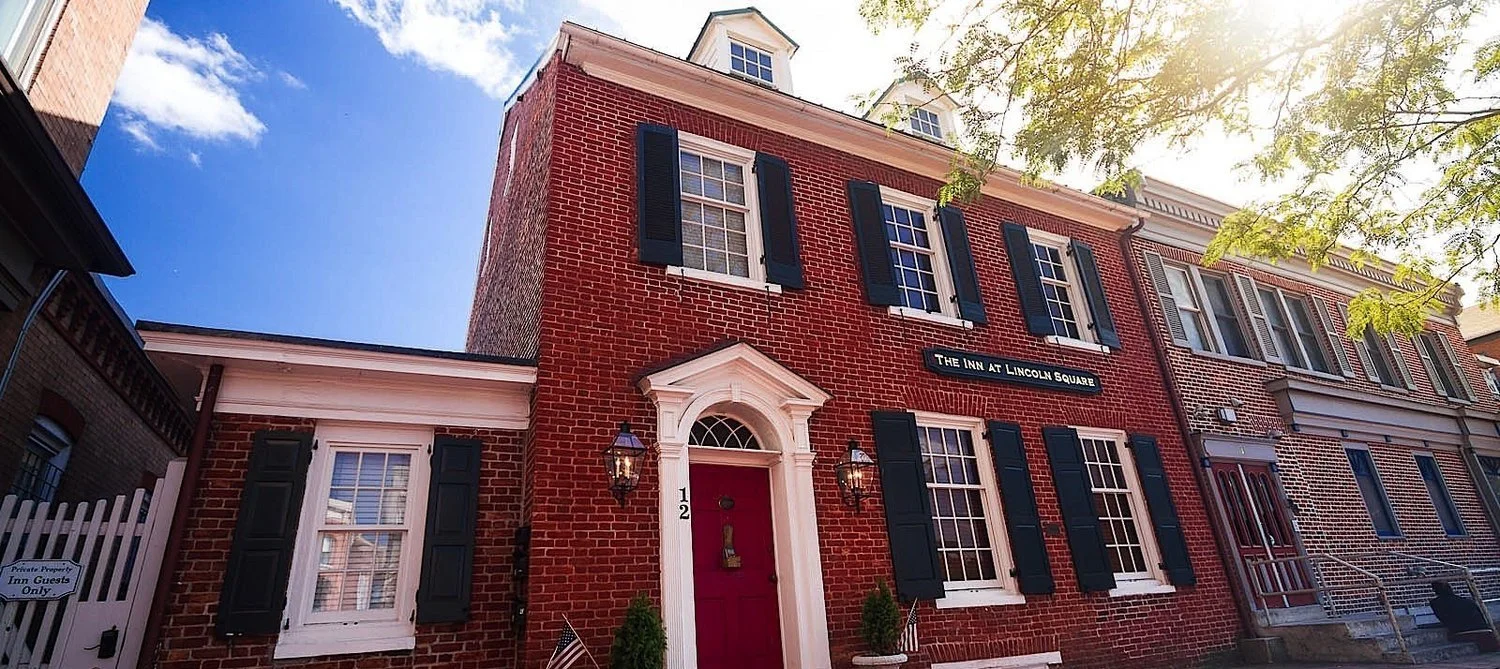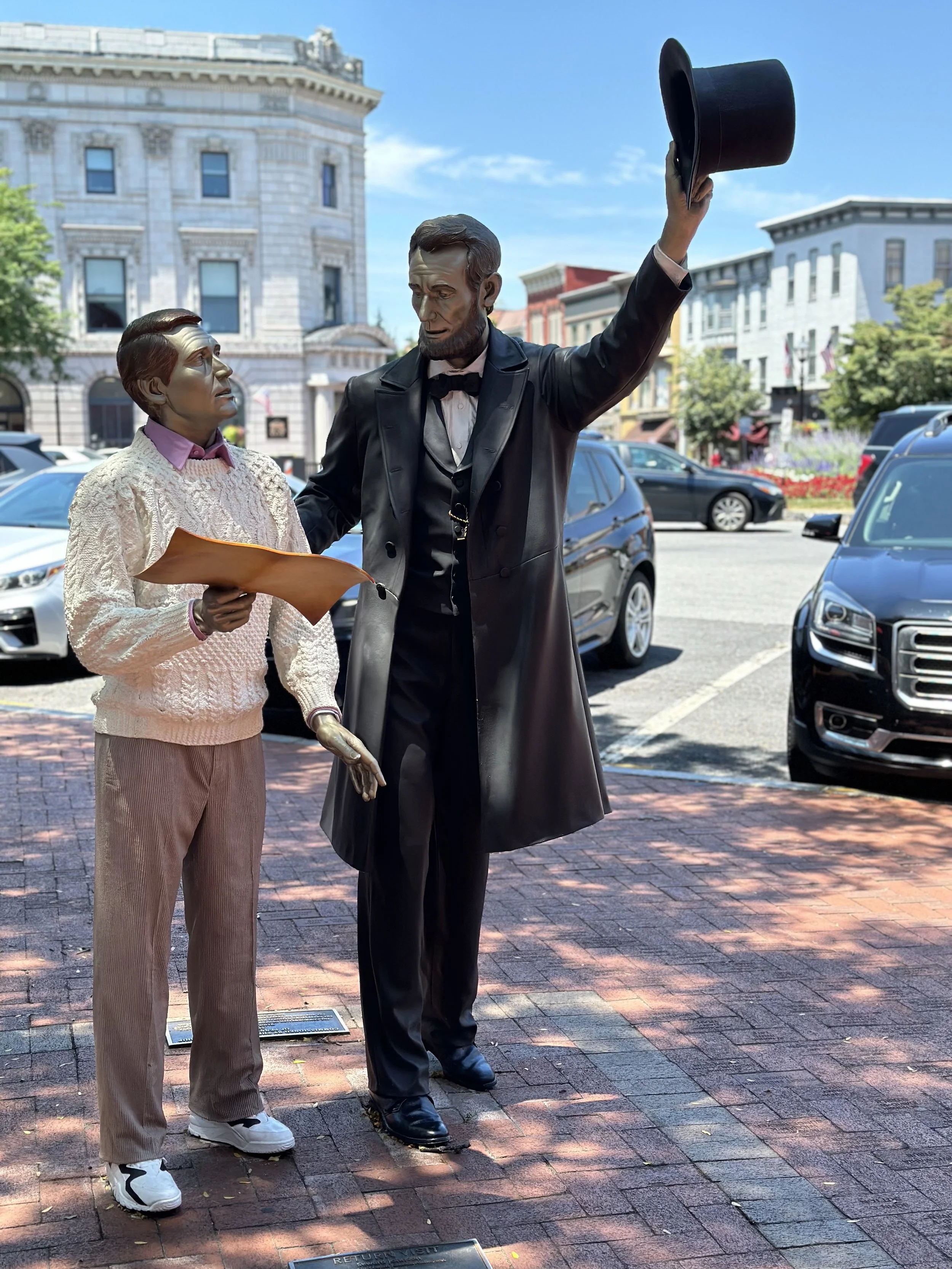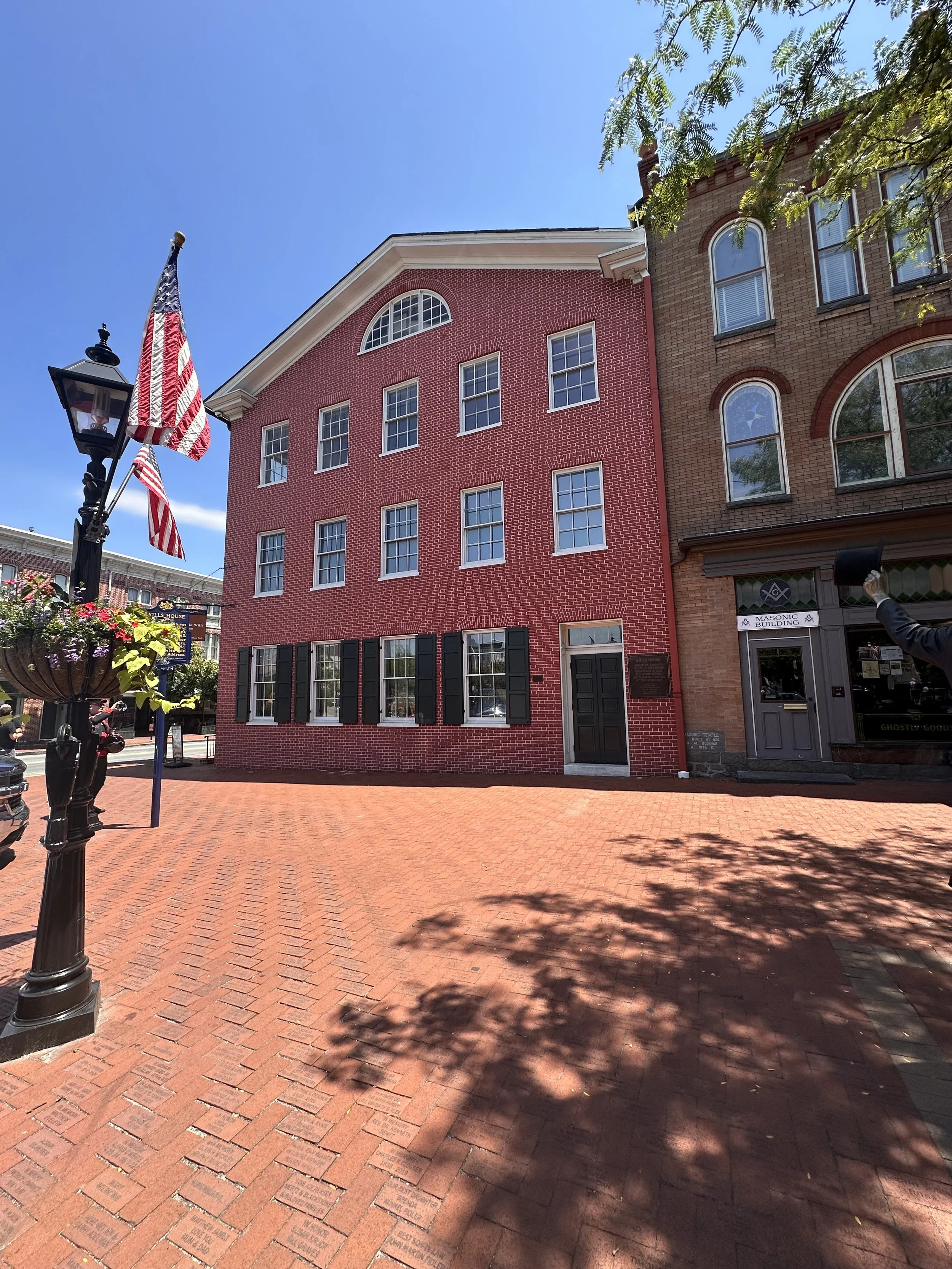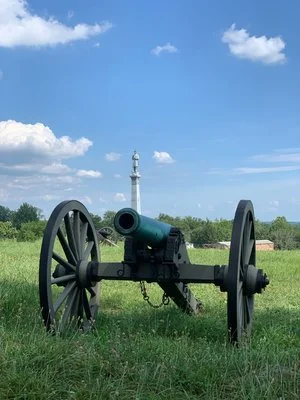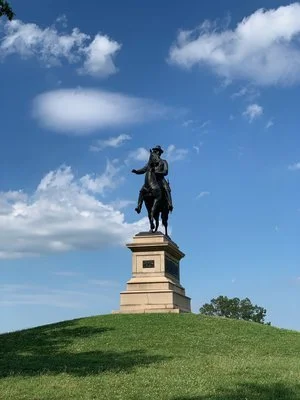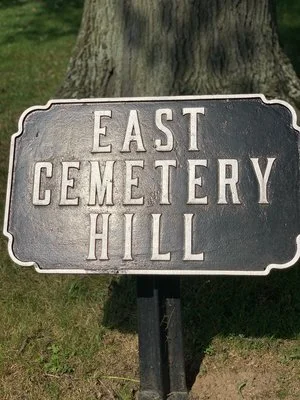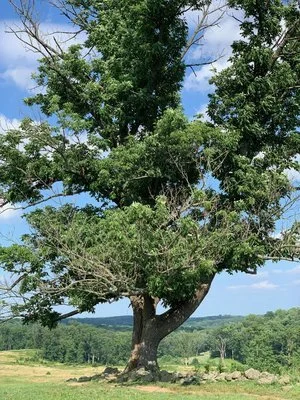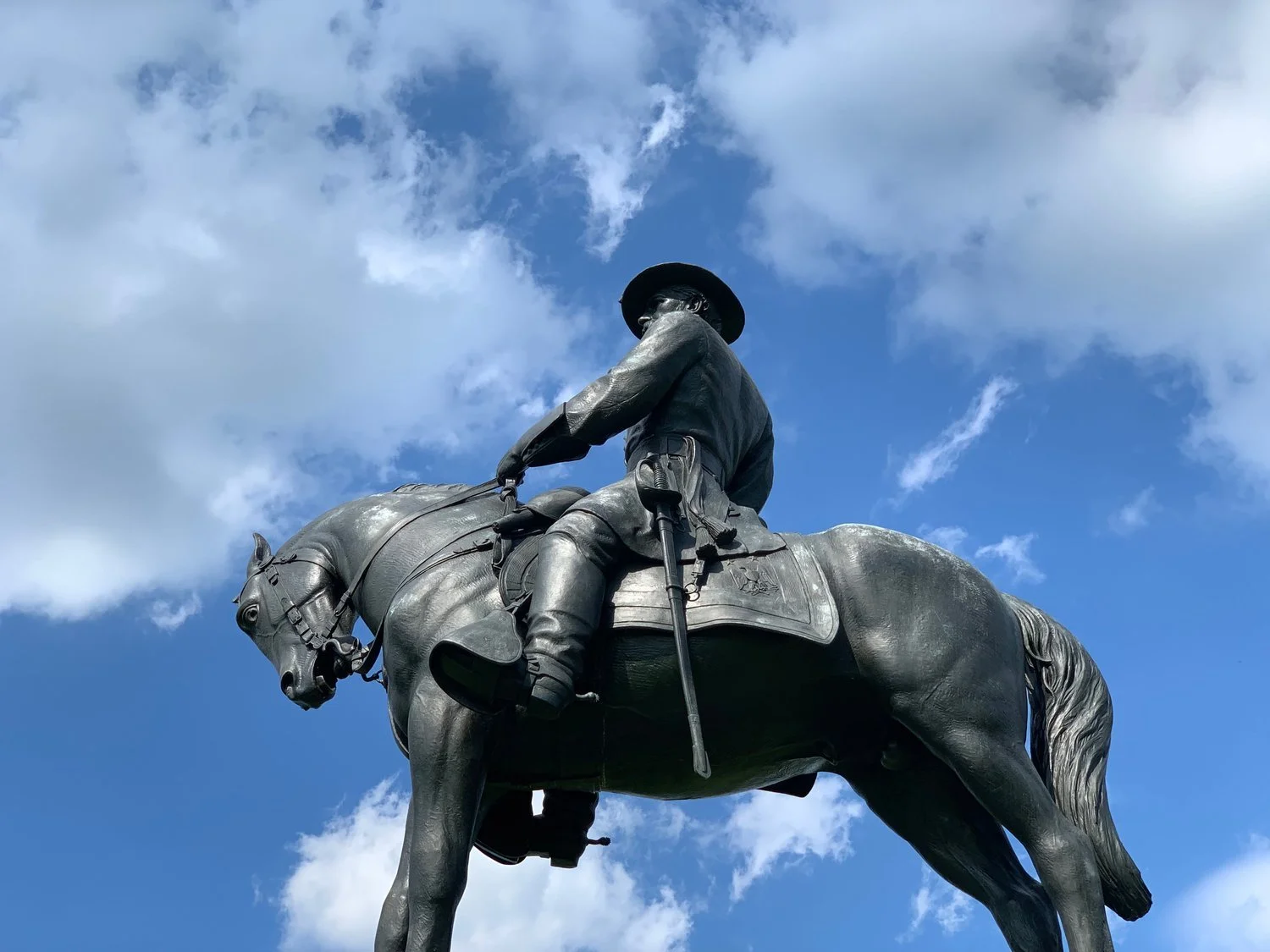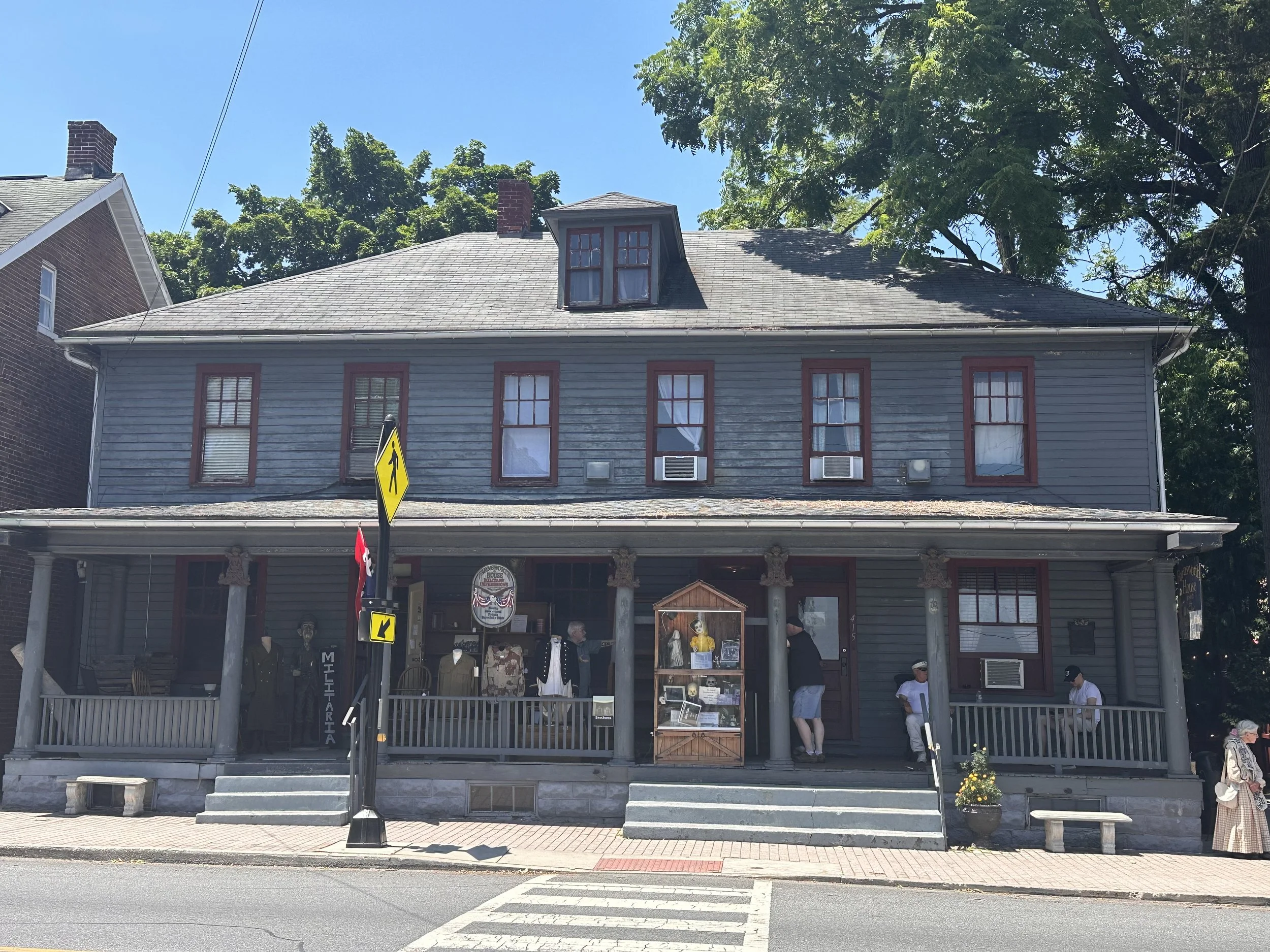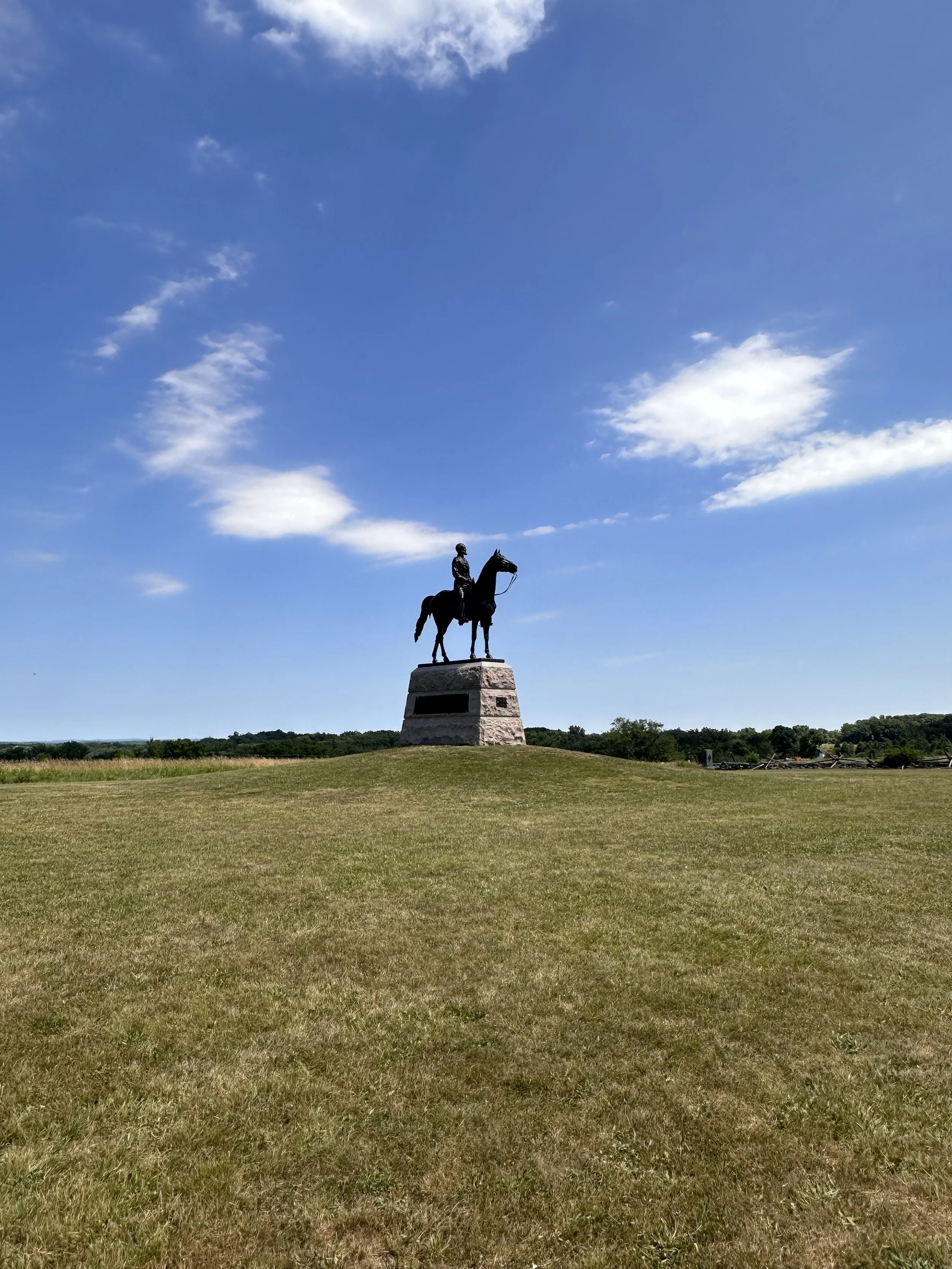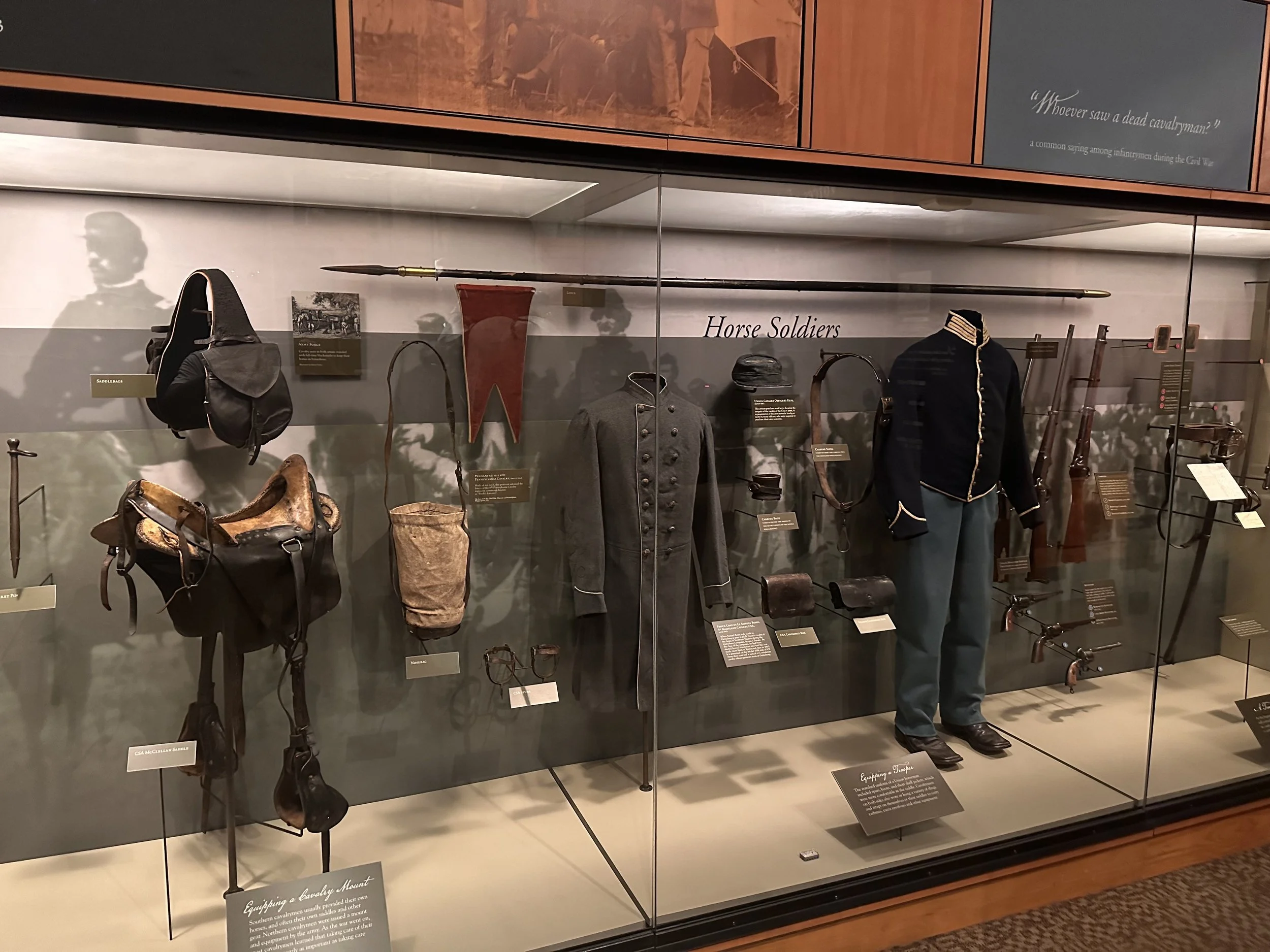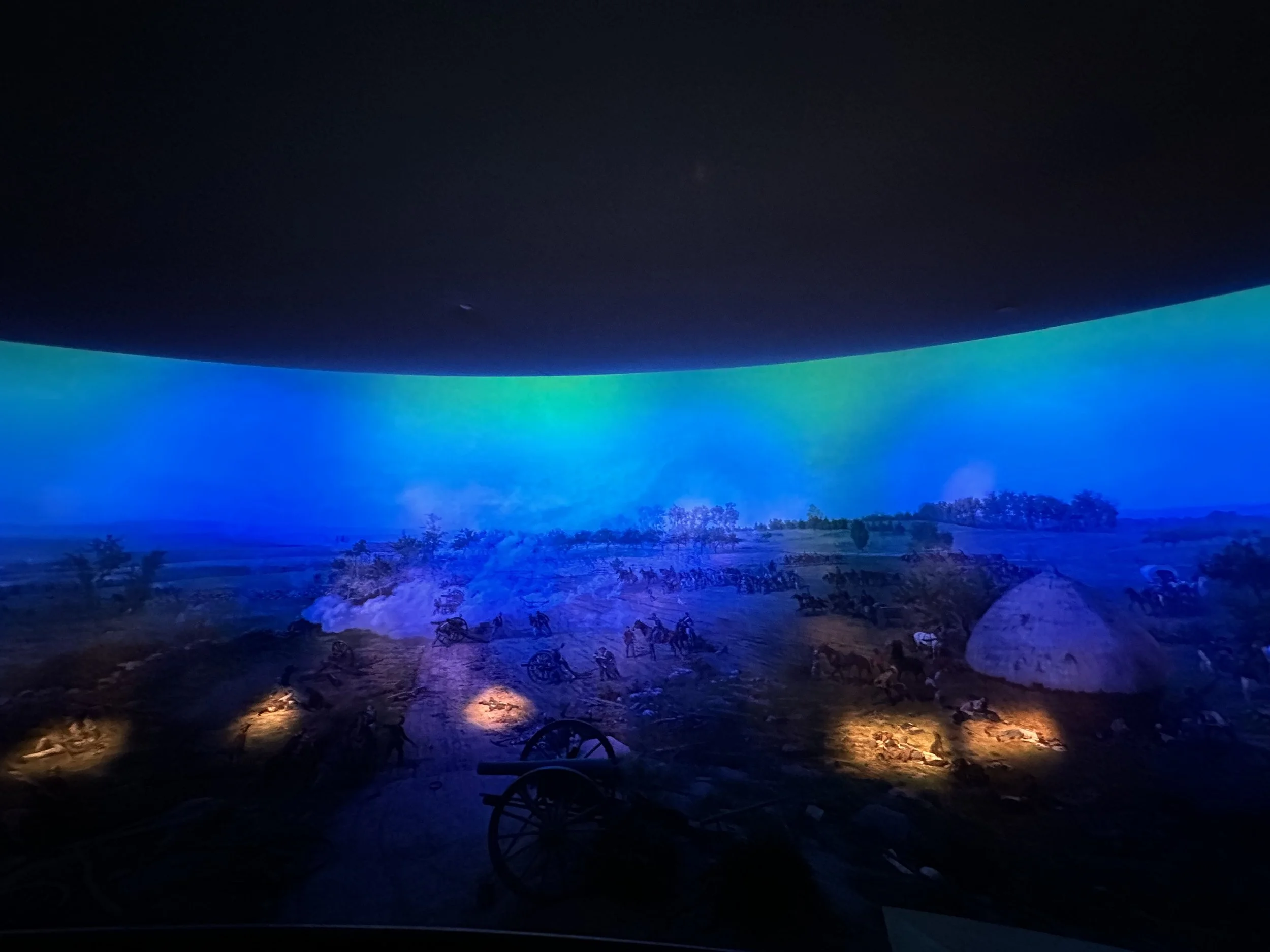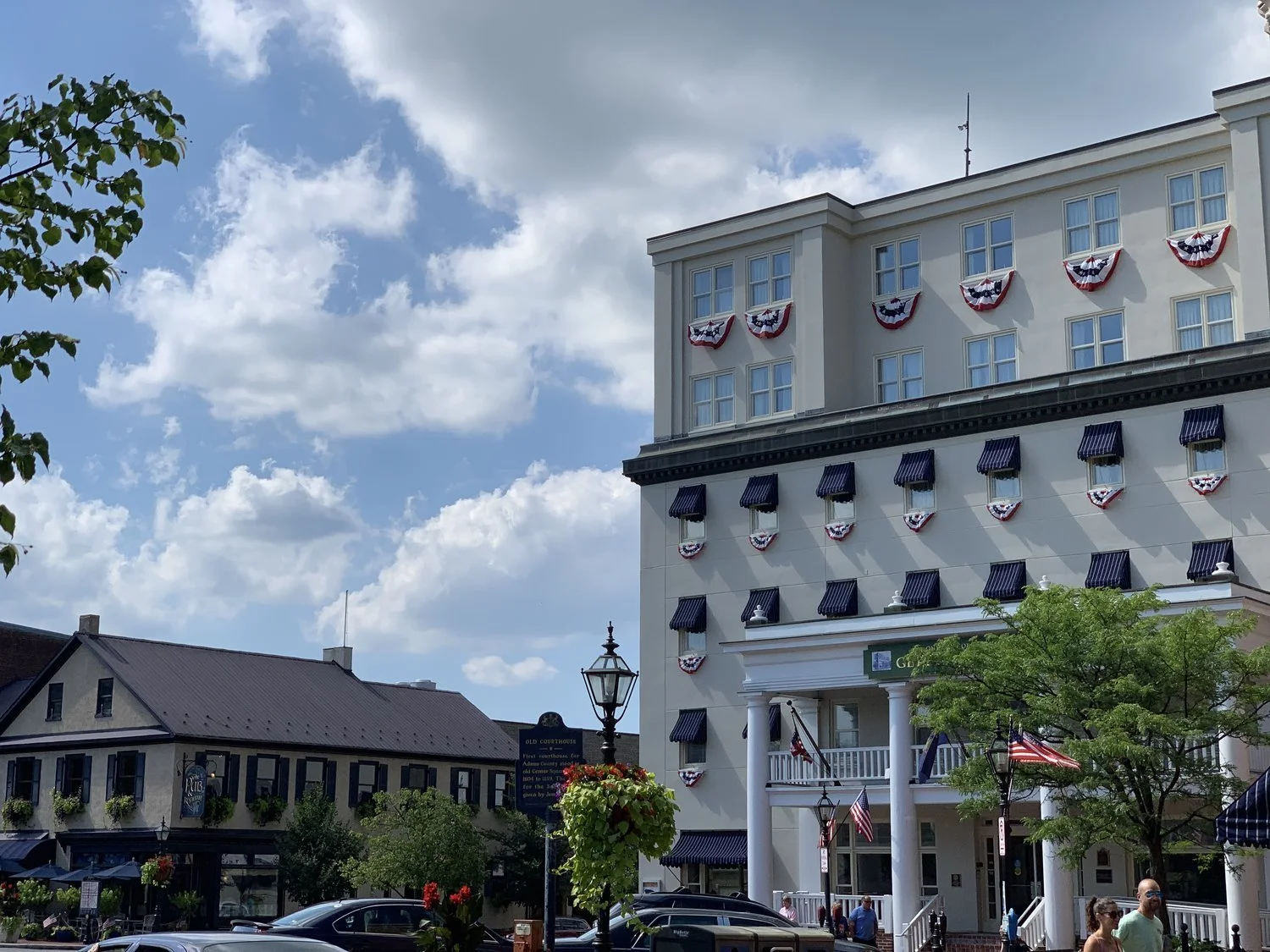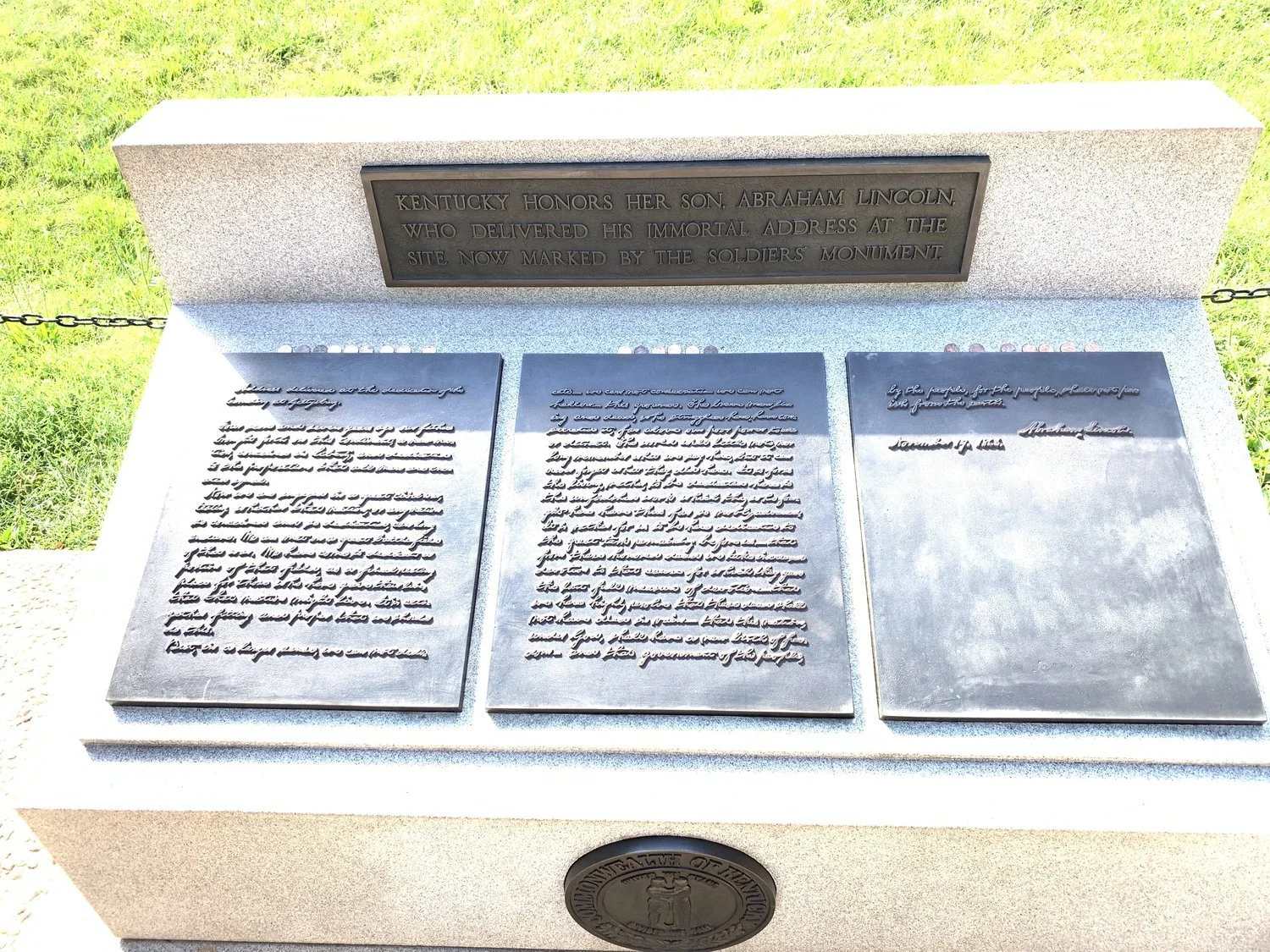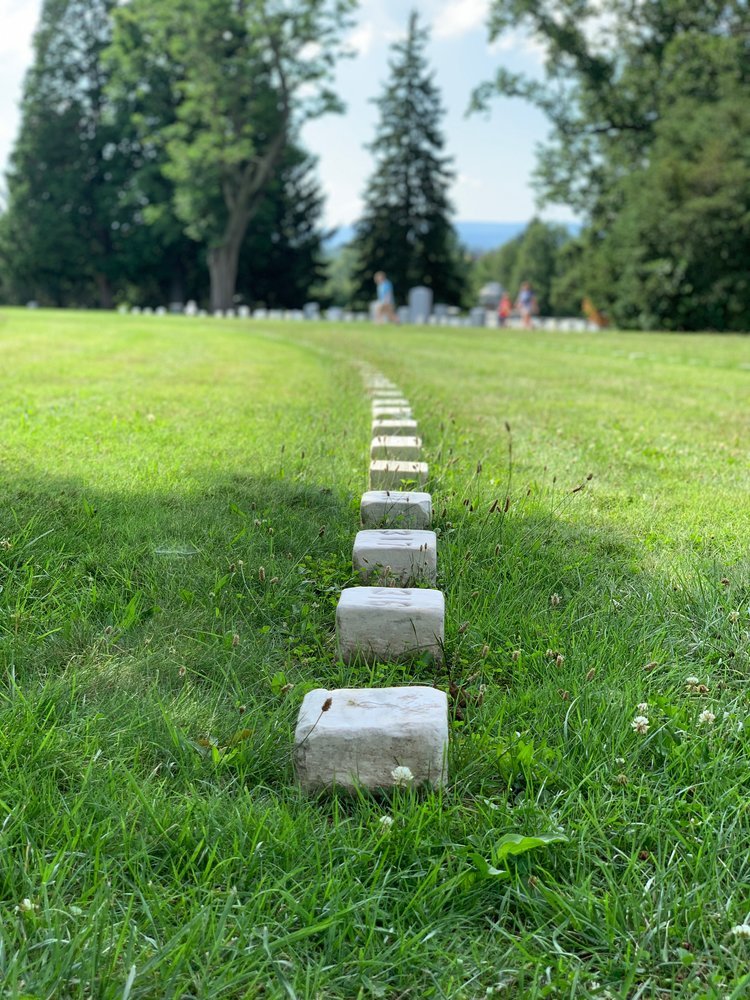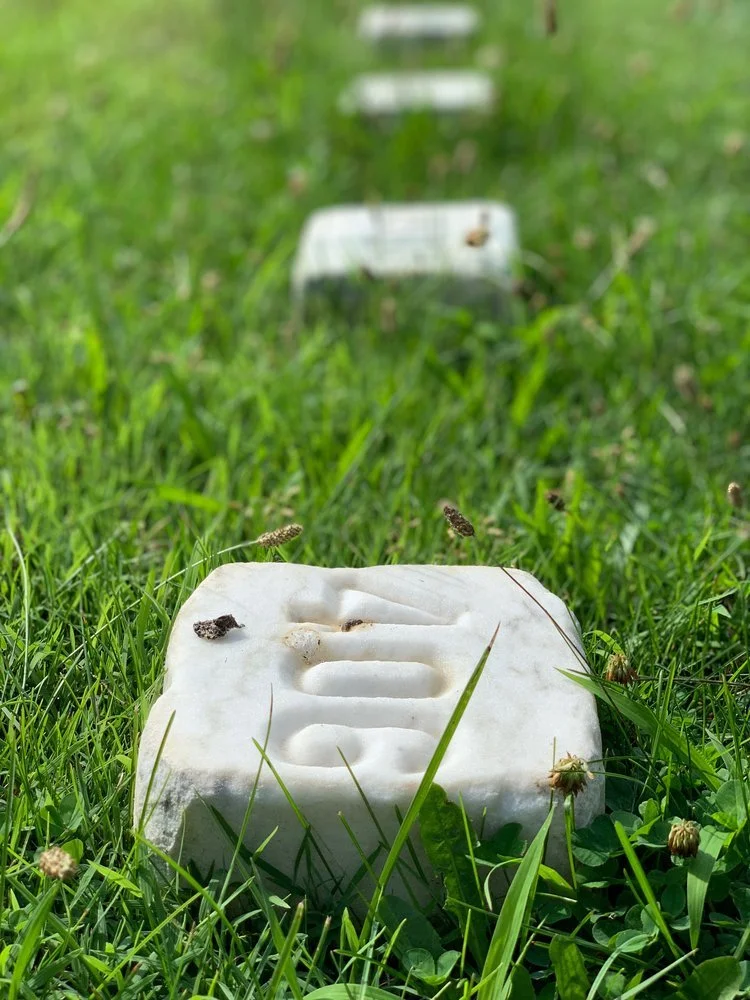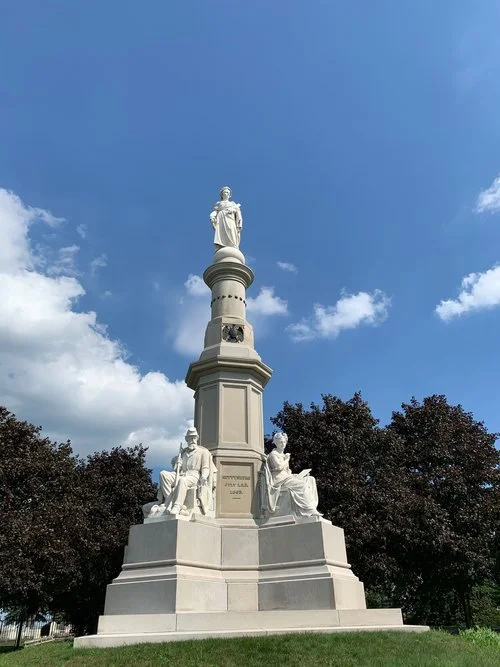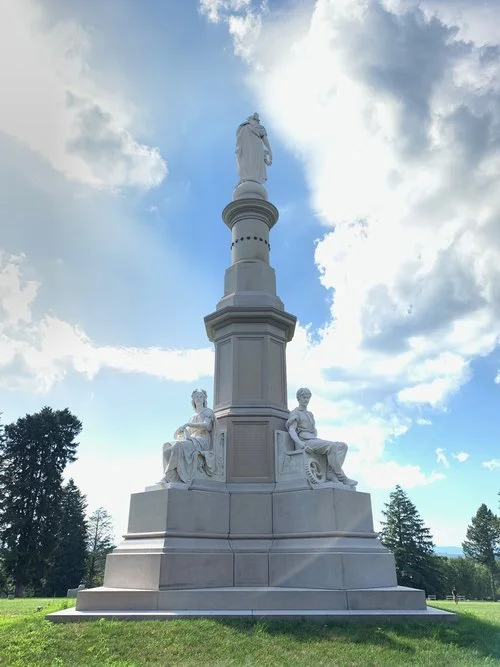Exploring Gettysburg, PA
Time needed in this town: A day trip/one night
I totally geek out over old historic towns. There’s something almost magical about being surrounded by history that has come to life, whether that be passing by centuries-old buildings with incredible histories, or walking around areas that once held infamous events.
A few weeks ago, I had the opportunity to do both in one of the most well-known towns in the United States - Gettysburg, Pennsylvania.
The below information is a complete guide of the best places to stay, the top rated places to dine and drink, and all there is to see and do. We’ve also included a summary of the history of this very historical town!
Jump To:
Where to Stay
Established in 1797, The Gettysburg Hotel has “seen it all” throughout the centuries, though has been updated for today’s modern comfort. In peeking into the lobby, I was a bit disappointed in how they had renovated it, as I was expecting a more prominent nod to its history and less of a collegiate feel.
The Inn at Lincoln Square
If you’re going to stay in a historic town, you want to stay in something authentic, and The Inn at Lincoln Square is it! Unlike The Gettysburg Hotel, you feel like you’ve stepped into a time machine that ports you back into the Colonial period, with rich woods, authentic furniture, and that intimate feel that only comes from staying at these cozy, historic places.
Other places to consider
Where to Dine & Drink
Beef Jerky Experience
The headquarters for The Beef Jerky Experience brand - you can sample them in-store and purchase from their large selection.
Dobbin House tavern
Dating from 1776, the Dobbin House is the oldest building in town. Its 250 years of history–including its role as a stop on the Underground Railroad and as a Civil War field hospital–are covered in the free tours that happen here each weekend. It serves typical tavern fare.
Food 101
Gourmet New American dishes & pizza served in a basic, modern space with bold prints & fabrics.
Gettysburg Chocolate Market
An old-timey chocolate and shake shop in downtown Gettysburg!
Hunt’s Battlefield Fries
Modest space filled with memorabilia known for its fries, cheesesteaks & assortment of sodas.
Mason Dixon Distillery
Per their website, “Yianni built his first still from a sketch his grandfather made him at age 11. After almost burning the house down while he was making moonshine in the garage, he was forced to practice his distilling outside. An apprenticeship in West Virginia brought his real world production knowledge up to speed.
Yianni spent a year and a half securing the proper licenses and meticulously restoring the 100 year-old factory that the distillery is housed in today. Outside the building is nondescript, matching the other factory buildings around them.
Mason Dixon Distillery offers vodka, white whiskey, gin, rum, and an excellent aged rum, which are all highlighted in a lengthy cocktail menu. Beyond the great drinks, what really sets Mason Dixon Distillery apart is its full-service restaurant. Not only do they have great burgers and BBQ, but the menu goes well beyond that to include dishes like shrimp and grits, goat cheese brûlée, and other unexpected specialties. You can visit for a tour, a drink, a meal, or all three.”
Mr. G’s Ice Cream
Cheery spot set in 2 quaint redbrick homes dishing up house-made ice cream (16 flavors), sundaes & shakes.
Rita's Italian Ice & Frozen Custard
Italian ices & frozen custards star at this counter-serve chain with a range of other cold treats.
Tacos Monarca
Weirdly, they serve some of the best pizza in Gettysburg and are known for their Mexican pizza.
The Gettysburger Company
Jumbo burgers & other homestyle classics are served with draft beer at this old-school restaurant.
The Pub
There were a lot of places to eat but after having done the research, the number one most recommended place is The Pub. It’s a large, charming, German-style pub with an extensive food and drink menu (note that it’s not very gluten-free-friendly, but there are options), offering both indoor and outdoor seating. What I loved most about it were the little details in everything from the crown molding, to the ceilings, to stained glass panes. It made me want to stay and explore every inch of it to make sure I didn’t miss anything!
Recommendation: Make sure to try at least one of the signature cocktail while you’re there!
Things to See & Do
Best known as the house where President Abraham Lincoln stayed, prior to delivering the Gettysburg Address, the home of attorney David Wills also served as a center for compassion and inspiration in the days and months following the Battle of Gettysburg.
Inside, Wills managed the immense task of providing proper burials for the fallen soldiers and began planning for the national cemetery. On the eve of the cemetery dedication, Lincoln spent the night in the home while adding the finishing touches to his inspirational address. With historic rooms restored to their 1863 appearance, today’s David Wills House features a seven-gallery interactive museum relating the story of Wills, Lincoln’s visit and the Gettysburg Address.
EAST HILL CEMETERY
On July 1, 1863, the first day of the Battle of Gettysburg, Union Maj. Gen. Oliver O. Howard chose Cemetery Hill to serve as the headquarters for his Eleventh Corps. His decision to fortify Cemetery Hill earned him the Medal of Honor.
The following day, Confederate General Robert E. Lee ordered Lt. Gen. Richard Ewell to demonstrate against the Union position and to convert the demonstration into a full-scale attack if the opportunity arose. At 4 p.m., Ewell launched an artillery barrage from his guns, situated on Benner’s Hill, but Union cannons on East Cemetery Hill and Culp’s Hill converged fire upon the Confederate artillery on Benner’s Hill and decimated the Southern cannoneers.
At 7:30 pm, Maj. Gen Jubal Early ordered two of his brigades to attack East Cemetery Hill. One brigade was composed of Louisianans under Brig. Gen Harry Hays while Col. Isaac Avery commanded North Carolinians. Brig. Gen John B. Gordon’s Georgians were held ready to support. Maj. Gen. Robert Rodes was supposed to attack with elements of his division in concert.
Despite resistance from scattered infantry as well as an obstinate defense by Union artillerymen, the crest of East Cemetery Hill fell to Confederate strength and daring. Nine cannons from Wiedrich and Rickett’s batteries fell into Confederate hands.
East Cemetery Hill was again captured in the days and weeks after the battle. The following month, August 1863, part of the hill was also captured permanently as the first battlefield park. The first land preserved at Gettysburg was the plot where Hays captured Wiedrich’s guns, From this small plot of land sprung the entire Gettysburg National Military Park. The Civil War Trust now has the opportunity to save the land where the 107th and 25th Ohio formed the salient in the Union line and engaged in bloody conflict with Hays’ Louisiana Tigers.
Eisenhower National Historic Site
Purchased by then-General Eisenhower and his wife, Mamie, in 1950, the farm served as a weekend retreat for the President and a meeting place for world leaders, and became the Eisenhowers' home after they left the White House in 1961.
With its putting green, skeet range, and view of South Mountain and the Gettysburg Battlefield, it offered President Eisenhower a much-needed respite from the pressures of Washington. It was also a successful cattle operation, with a show herd of black Angus cattle. Some of the more notable of Eisenhower's guests were Premier Nikita Khrushchev of the Soviet Union, President Charles de Gaulle of France, Prime Minister Winston Churchill of Britain, and Governor Ronald Reagan of California (who later became President himself).
The home has been preserved in the 1960s decor, even during Christmas.
Farnsworth House Inn
Known as one of the most haunted homes in Gettysburg, the house is named in honor of Brigadier General Elon John Farnsworth, who led an ill-fated charge after the failure of Pickett’s charge, claiming the lives of Farnsworth and 65 of his men.
The original part of the house was built in 1810, followed by the brick structure in 1833. The house sheltered Confederate sharpshooters during the three-day conflict, one of whom it is believed to have accidentally shot 20 year-old Mary Virginia “Jennie” Wade, the only civilian who died during the battle. More than 100 bullet holes pock the walls. Following the battle, the house served as a hospital.
Today, the Farnsworth House Inn stands as a testament to the enduring legacy of the Battle of Gettysburg. Visitors can stay in rooms that once sheltered wounded soldiers and experience firsthand the echoes of history that still resonate within its walls. The inn offers guided tours that recount the harrowing events of the battle and the house’s role in providing aid to the wounded.
Their Meade and Lee dining rooms offer Pennsylvania Dutch and period fare served by period-dressed servers. Their family-friendly Sweney’s Tavern features a vast collection of props from the movie, Gettysburg. The garret (attic) holds a personal collection of Civil War artifacts.
The Farnsworth House has won many awards and recognition over the years. A&E, BBC, Food Network, Discovery, History, Sci-Fi, and Travel Channels, Hollywood Squares and Wheel of Fortune have featured our Historic Inn.
General George Meade Statue
The monument to Major General George Gordon Meade is south of Gettysburg on Cemetery Ridge. The monument was dedicated by the State of Pennsylvania on June 5, 1896.
Meade was ordered to take command of the Army of the Potomac just three days before the Battle of Gettysburg when General Joseph Hooker abruptly resigned. Before that, Meade had been in command of the army’s Fifth Corps.
About General Meade’s Horse, Old Baldy
Old Baldy was a cavalry mount ridden by General David Hunter at the Battle of Bull Run. He was wounded there but returned to service. Meade purchased him in the fall of 1861.
Meade rode Old Baldy at Gettysburg. The horse was wounded on July 2nd by a ball that entered his stomach after passing through Meade’s trouser leg within a half inch of his thigh. Old Baldy again survived, but after another wound in August of 1864 he was considered unfit for service, and Meade sent him back to Philadelphia for a well-deserved retirement. Old Baldy did so well in his retirement that Meade resumed riding him after the war. The horse survived the general by ten years, taking part in Meade’s funeral procession in 1872 as the riderless horse. Old Baldy died in 1882.
Gettysburg National Military Park Museum
The Gettysburg Museum and Visitor Center is a Gettysburg National Military Park facility, with a museum about the American Civil War, the 1884 Gettysburg Cyclorama, and the tour center for licensed Battlefield Guides and for buses to see the Gettysburg Battlefield and Eisenhower National Historic Site.
It houses one of the largest collections of Civil War artifacts in existence. The nearby Cyclorama painting will make you feel like you’re immersed in Pickett’s Charge, the climax of the battle. The third exhibit is a film, “A New Birth of Freedom,” narrated by actor Morgan Freeman, which sets the stage for the conflict.
ghost tours
Naturally, with such a bloody battle, there’s bound to be a few ghosts haunting around. Check out some of the 5-star ghost tours below:
Historic Round Barn and Farm Market
Per their website, “The Historic Round Barn & Farm Market is a family owned and operated farm market just 8 miles west of the Civil War town Gettysburg. Built in 1914, it is one of only a handful of truly round barns surviving today. Set in a scene of picturesque Pennsylvania foothills, you'll love its beautiful architecture against the rolling, orchard-covered hills. Whether you're here for an event, our fresh fruit, or just exploring, we think you'll find it's a truly well rounded experience.”
Jennie Wade House
Mary Virginia “Jennie” Wade lived on Breckenridge Street in Gettysburg, where she and her mother worked as seamstresses. They fled their home in anticipation of the coming battle, choosing to stay with Jennie’s sister, Georgia McClellan. This was not only for their own safety, but because Georgia was very pregnant, giving birth just an hour before the Confederate Army arrived in Gettysburg.
Jennie was said to be betrothed to Corporal Johnston “Jack” Skelly, a childhood friend-turned romantic interest. Jack was wounded and captured in Winchester, a fact that Jennie would never learn.
In the early morning of July 3rd, Jennie began to knead a fresh batch of dough (as her and her sister continually did for the soldiers). Confederate soldiers began firing on the North side of the house, which was hit by over 150 bullets. One such bullet, a Minié ball, passed through two doors and struck Jennie in the shoulder, penetrating her heart and finally coming to rest in her corset, ending her life at approximately 8:30AM on July 3, 1863.
Federal soldiers carried Jennie’s body to the cellar—later they would bury her. Jennie’s mother would go onto bake 15 more loaves of bread for the soldiers the very next day. Corporal Skelly died a week later.
Today, Jennie is buried near Jack in the Evergreen Cemetery. A monument marks her resting place, as well as a perpetual American flag that flies day and night. The only other woman to claim that honor is Betsy Ross.
LINCOLN SQUARE
Lincoln Square is why people stay the weekend in Gettysburg. There are so many historic buildings, charming shops, and places to explore that my afternoon there certainly wasn’t enough.
Sachs Covered Bridge
The Sachs Covered Bridge was built around 1854 at a cost of $1,544. On July 1, 1863, the bridge was crossed by the two brigades of the I Corps of the Union Army heading towards Gettysburg. The III Corps also crossed the bridge heading to the Black Horse Tavern. Four days later, the majority of General Robert E. Lee's Army of Northern Virginia retreated over the bridge after the Union victory in the Battle of Gettysburg.
The bridge was designated Pennsylvania's "most historic bridge" in 1938. After a plan, in 1960, to replace the bridge, the Cumberland Township officials voted to close the bridge to vehicular traffic, while leaving it open to pedestrians. It was listed on the National Register of Historic Places on August 25, 1980.
On June 19, 1996, a flash flood knocked the bridge from one of its abutments and it incurred substantial damage. A $500,000 restoration on the bridge was already in progress before the flood, which meant an additional $100,000 needed to be raised to repair the damage incurred. The bridge was rededicated on July 21, 1997.
Shriver House
George Washington Shriver was born on July 27, 1836, on his family's farm, located eight miles southeast of Gettysburg. It was quite a prosperous farmstead with a sizable farmhouse, bank barn and various smaller outbuildings. George's father was in the business of manufacturing liquor and when he died suddenly in September 1852, George inherited not only a 200+ acre farm, barn, and distillery, but close to 3,000 gallons of liquor.
Less than two miles away from the Shriver farmstead lay another prosperous farm which belonged to Jacob and Sarah Weikert. Hettie was the sixth of their 13 children, born on March 7, 1836.
On January 23, 1855, when they were both eighteen years of age, George and Hettie married and immediately started a family of their own. Four years later, George sold off a portion of his farm and, in the spring of 1860, paid $290 for a piece of property on Baltimore Street just a few blocks south of the center of town. This was the ideal location to build a new home for his growing family. This is also where George planned to open his new business: Shriver's Saloon & Ten-Pin Alley. The saloon would be located in the cellar of their home while the back yard was large enough to accommodate a building to house the ten-pin (bowling) alley. However, by mid-1861, just as the saloon and bowling alley were ready, the Civil War began.
George left for battle and was gone for nearly two years before the battle came closer to Gettysburg. Hettie fled to her family’s farmhouse and didn’t know that after three days of fighting, it would be the site of a hospital as would be her home in downtown Gettysburg. In fact, when she returned, all her food stuffs, liquor, linens, etc. had been consumed/used by the soldiers. George would return for Christmas in 1863 and when he had to go back to fighting, he was taken as a Prisoner of War and never returned again.
TIP: There is a reenactment available. Click here for tickets.
SOLDIERS NATIONAL CEMETERY ON CEMETERY HILL
Across from East Cemetery Hill is Soldiers National Cemetery - the place where Lincoln gave his famous “Gettysburg Address” speech.
Walking in through the gates, directly across from East Cemetery Hill, you are greeted with a sign that says, “No talking”, though it isn’t the kind of place you actually want to. Once you walk through the overarching pine trees and out onto the cemetery grounds, you’re immediately taken aback by how many grave stones and markers there are, especially those marked “unknown”.
I walked down these paths for a bit, following them to the left to get to the Kentucky monument - the place where Lincoln delivered his address.
It was a bit of a surreal moment for me to stand in that spot and try to picture what it was like to be a surviving soldier or civilian and listen to Lincoln try to uplift them all. I left there feeling a bit heavier, but also in awe.
Statue of Sallie Ann Jarrett
Sallie Ann Jarrett was the canine mascot of the 11th Pennsylvania Infantry, accompanying the soldiers throughout nearly the entire American Civil War, until she was killed in action in February 1865. Sallie, as the men would come to call her, was born in the spring of 1861 and was described by Colonel Richard Coulter as "a brindle, bull-terrier, of a fine breed," who "showed marks of blood." Her actual breed was American Pitbull. She was given to Capt. William R. Terry of Company I in May of that year by a resident of West Chester, Pennsylvania, where the regiment was training at Camp Wayne, on the town's former fairgrounds. The men named the pup in honor of two people, a young lady whom they admired and their original commanding officer, Colonel Phaon Jarrett.
Sallie adapted quickly to army life, joining the soldiers at their drills and establishing her place beside the color guard for dress parade. Whenever the regiment left camp, her chosen position was at the head of the march with the horse ridden by Coulter, the regiment's colonel. Sallie quickly became known to other regiments brigaded with the 11th Pennsylvania as "Dick Coulter's dog." On two occasions, she marched with the regiment in review before President Abraham Lincoln.
Sallie did not shrink from battle but accompanied the regiment into the fighting, taking a position at the front lines and barking furiously at the enemy. She saw action in each of her regiment's engagements, among them Cedar Mountain, Second Bull Run, Antietam, Fredericksburg, Chancellorsville, Gettysburg, the Wilderness, and Petersburg. She also had five litters of pups during these.
On July 1, 1863, the first day of fighting at Gettysburg, Sallie became separated from the regiment during the Union retreat to Cemetery Hill, and the soldiers feared she had been killed. But she had remained behind on Oak Ridge, where she was found days later, still guarding her wounded and dead companions. Sallie was returned to her regiment and soldiered on until a few weeks before the war's end.
During the Battle of Spotsylvania Court House, Sallie was hit in the neck and treated by the surgeon. The ball could not be removed, but Sallie survived and eventually, the ball worked its way out.
On February 6, 1865, during the Union advance at Hatcher's Run, Virginia, she was struck by a bullet and killed. Despite being under heavy fire, several soldiers put aside their arms to bury her on the spot.
When the veterans of the 11th erected their monument on the Gettysburg Battlefield in 1890, a life-size bronze statue of Sallie was included on a granite pedestal in a place of honor at the front of the monument. Her statue lies below the towering bronze figure of a skirmisher, recalling the soldiers who fought beside her and whom she guarded on Gettysburg's fields.
day trips
Gettysburg can take up a weekend if you’re serious about walking every square foot of every Civil War site. However, if you want to branch out and take a bit more of a road trip, here’s what else is nearby (all located on US-15N):
Harper’s Ferry - If you have never been, make it an all-day affair. There’s so much to see and do, including some really beautiful hikes!
Luray Caverns - It’s still an amazing wonder! It also has my favorite fudge shop in Virginia and houses a great collection of antique cars.
A History Summary
1736 - The Penn Family authorized European settlers to inhabit the land that would become Adams County.
1758 - Shawnee and Frenchmen plundered Thomas and Jane Jameson’s homestead at dawn. They, along with their seven children, were captured and taken west. This is one of many examples of raids in this year.
1786 - Gettysburg was founded. It was named after Samuel Gettys, an early settler and tavern owner.
1806 - The Borough was incorporated.
1826 - The Lutheran Theological Seminary was founded.
1832 - The Gettysburg College was established.
1860 - Gettysburg had 2,400 inhabitants.
1863 - 1864 - Many homes and public buildings were used to treat over 20,000 soldiers.
1863 - Gettysburg saw the three bloodiest days during the Civil War, in July of that year. Lincoln would give is address, from Gettysburg, in November of that year. Nearly 51,000 soldiers needed to be buried, many of which wouldn’t be until after Lincoln’s address.
1884 - The cyclorama is completed. It is 50-feet tall and over a football field in length, and captures the arguably most climactic moment of the three-day battle.
1910 - The Pennsylvania State Memorial Monument was dedicated.
1913 - The town hosted the largest ever Civil War veteran reunion, with over 53,000 veterans attending, representing 46 out of 48 states.
1938 - The veteran reunion featured a crowd over of 200,000 people, including almost 2,000 veterans (average age 94), out of the 8,000 Civil War veterans still alive at the time. At both reunions, the survivors shook hands across the rock wall known as “the Angle”.
Late 1950s - The Eisenhowers build and move into their Gettysburg farmhouse.


